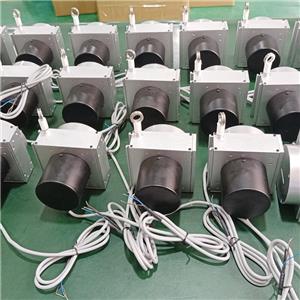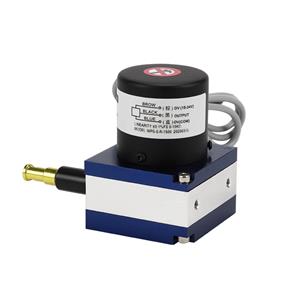News
-
10-23 2025
What is a draw wire sensor?
The draw-wire displacement sensor is also called a draw-wire sensor, a draw-wire electronic ruler, or a draw-wire encoder. The draw-wire displacement sensor is a sophisticated structural construction of a linear displacement sensor. It fully combines the advantages of an angle sensor and a linear displacement sensor to become a sensor with a small installation size, compact structure, large measuring stroke, and high accuracy. The stroke ranges from hundreds of millimeters to tens of meters. A draw-wire sensor (also called a string pot, cable extension transducer)is a linear position sensor that measures the displacement or velocity of a moving object. It works by converting the linear motion of a flexible measuring wire into a rotary motion, which is then translated into an electrical signal.
-
09-04 2025
Working Principle of Draw Wire Sensor
Draw wire sensor is also called rope ruler and rope encoder. Its working principle is very simple, that is, the wire rope at the outlet of the sensor is pulled, in which the wire rope is wound on a pulley built in the sensor. When the wire rope is pulled, the other end of the sensor is connected to the mechanical motion, and a display is installed on it to convert the mechanical motion into an electrical signal to obtain the required data. In operation, the pull rope displacement sensor is installed at a fixed position, and the pull rope is tied to the moving object. The linear motion of the pull rope is aligned with the motion axis of the moving object. When the movement occurs, the rope stretches and contracts. An internal spring ensures that the tension of the pull rope is constant. The threaded hub drives the precision rotation sensor to rotate, and outputs an electrical signal proportional to the moving distance of the pull rope. The displacement, direction or velocity of the moving object can be obtained by measuring the output signal. Commonly used parameters include measuring stroke, output signal mode, linearity, repeatability, resolution, wire diameter specification, outlet tension, maximum round-trip speed, weight, input resistance, power, working voltage, working temperature, vibration, protection level, etc.



